 Essay Writing Web
Essay Writing Web
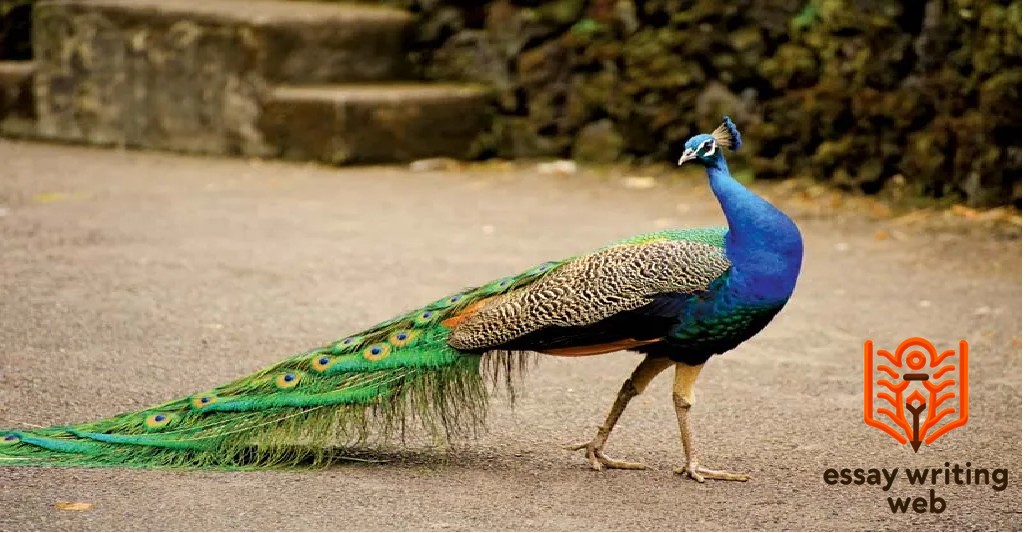
 14-09-2024
14-09-2024
 www.essaywritingweb.com
www.essaywritingweb.com
The peacock, with its vibrant colors and strikingly beautiful feathers, is one of nature's most captivating birds. Known for its grandeur, the peacock stands as a symbol of beauty, grace, and dignity. It is no wonder that the peacock is the national bird of India, a nation rich in cultural and natural diversity. The scientific name of the Indian peacock is Pavo cristatus, and it belongs to the pheasant family, making it part of the larger group of ground-dwelling birds.
A male peacock’s most distinguishing feature is its long, colorful tail feathers, which it displays in an extravagant fan-like manner during courtship. These tail feathers are adorned with shimmering hues of blue, green, and gold, and feature striking "eye" patterns. This impressive display, coupled with its regal demeanor, has led to the bird’s widespread appreciation in various cultures around the world.
Peacocks are primarily found in the Indian subcontinent, thriving in regions with abundant vegetation, like forests and grasslands. They are omnivorous, feeding on insects, plants, and small creatures, which helps maintain the balance of the ecosystem. The peacock is also known for its sharp call, which echoes through the forest and is often heard before rain, leading to its association with rain and monsoon in Indian folklore.
Beyond their natural beauty, peacocks hold a deep significance in Indian culture and mythology. They are considered sacred in various religious texts and are often depicted in art and sculptures, symbolizing immortality, pride, and divinity. With their blend of aesthetic appeal and cultural importance, peacocks are not just admired for their beauty but also revered for their symbolic meanings across different traditions.
The peacock, with its stunning beauty and graceful presence, holds a special place in Indian culture as the national bird of India. Known scientifically as Pavo cristatus, the Indian peacock is admired for its vibrant plumage and majestic tail feathers, which the male displays in an elaborate fan-like spread during courtship. The iridescent blue and green colors of its feathers, along with the iconic "eye" patterns, make the peacock one of the most recognizable and celebrated birds in the world.
Native to the Indian subcontinent, peacocks are typically found in forests, grasslands, and farmlands, where they thrive in lush, green environments. They are omnivores, feeding on seeds, insects, and small creatures. Peacocks are also known for their loud calls, often heard during the monsoon season, leading to their association with rain in Indian folklore.
In Indian culture, the peacock is considered a symbol of beauty, elegance, and pride. It holds religious significance, appearing in Hindu mythology as the mount of Lord Kartikeya and being associated with Goddess Saraswati. The decision to designate the peacock as the national bird of India reflects its cultural and ecological importance, as well as its embodiment of the country’s rich natural heritage.
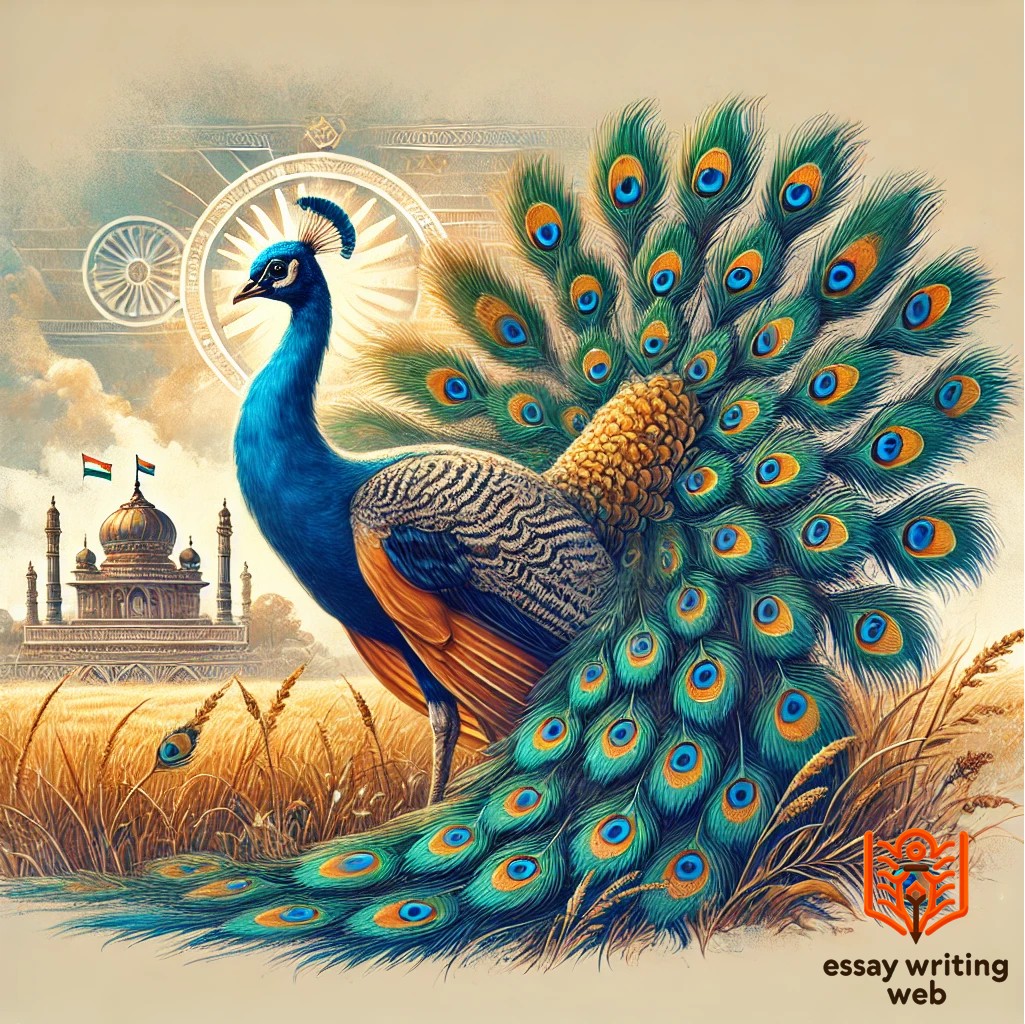
The peacock is one of the most stunningly beautiful birds in the world, known for its vivid colors and striking physical appearance. The male peacock, in particular, is recognized for its long, iridescent tail feathers, which can grow up to 5 feet in length and make up more than 60% of its total body size. These tail feathers, called a train, are adorned with eye-catching "eye" patterns that shimmer in shades of blue, green, and gold when spread out during courtship displays.
The body of the peacock is a brilliant metallic blue, while the wings are a combination of green, brown, and black hues. The crest of the peacock, a small tuft of feathers on its head, adds to its regal appearance. While the male is vibrant and extravagant, the female, known as the peahen, has more muted brown and gray feathers, which help her blend into the surroundings and protect her while nesting.
Peacocks have strong legs and sharp spurs, which help them fend off predators. Though they are capable of short flights, they prefer to spend their time on the ground. This spectacular bird's physical traits have made it a symbol of grace, beauty, and royalty in many cultures across the world.
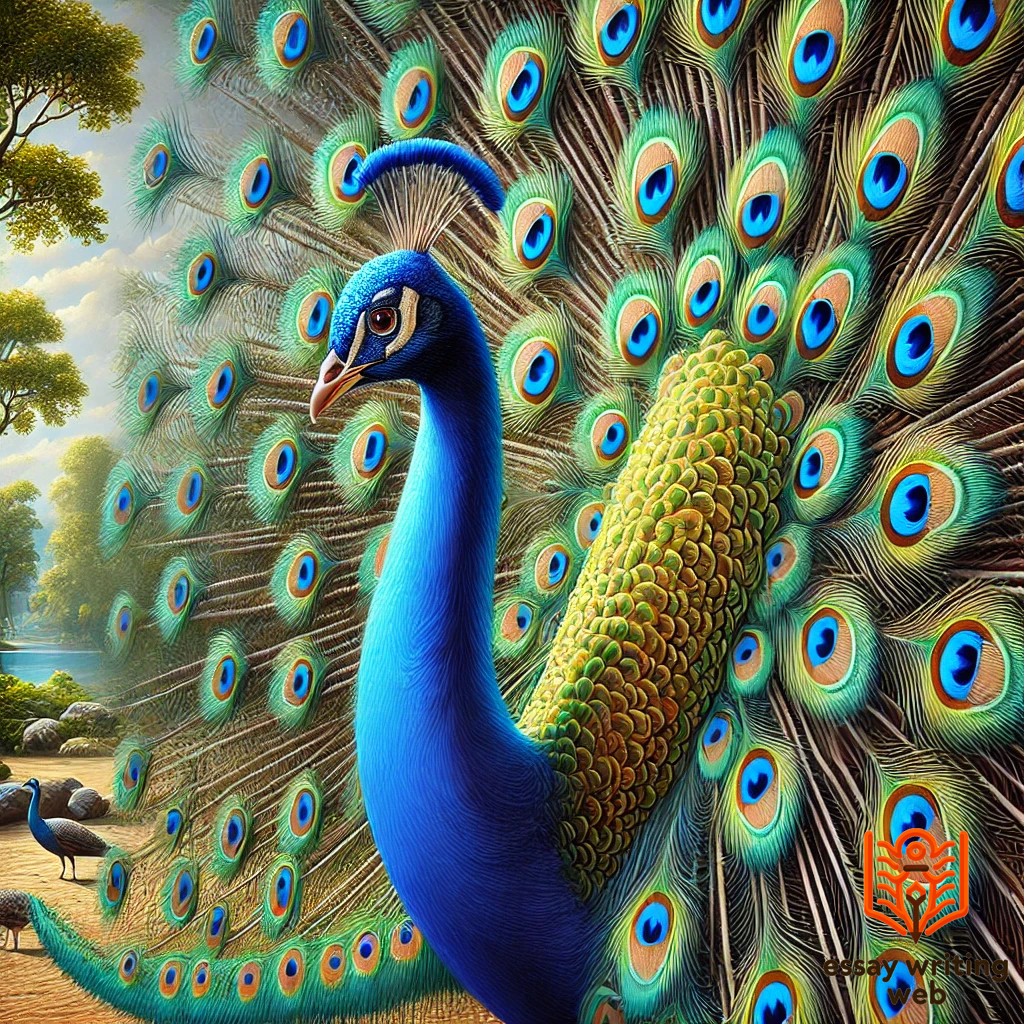
The peacock is renowned for its breathtaking beauty, particularly due to the male peacock’s elaborate tail feathers, known as a train. This train is one of nature’s most stunning displays of color and pattern. The feathers, which can reach up to 5 feet in length, are decorated with iridescent shades of blue, green, and gold, shimmering with every movement. What sets these feathers apart are the distinctive "eye" patterns, which appear at the tip of each feather, creating a mesmerizing, almost hypnotic effect when the peacock fans out its tail in a full display.
During courtship, the male peacock spreads its train into a large fan, often spanning nearly 6 feet wide. This display is not only a spectacle of color but also a strategic dance designed to attract a female peahen. The vibrant colors and complex patterns of the feathers are meant to impress, signaling the male’s vitality and fitness.
The plumage's iridescence is caused by microscopic structures in the feathers that reflect light, making the colors appear to shift and shimmer. This unique combination of vivid hues and eye-catching patterns makes the peacock's plumage one of the most remarkable features in the animal kingdom, symbolizing beauty, elegance, and pride across cultures.
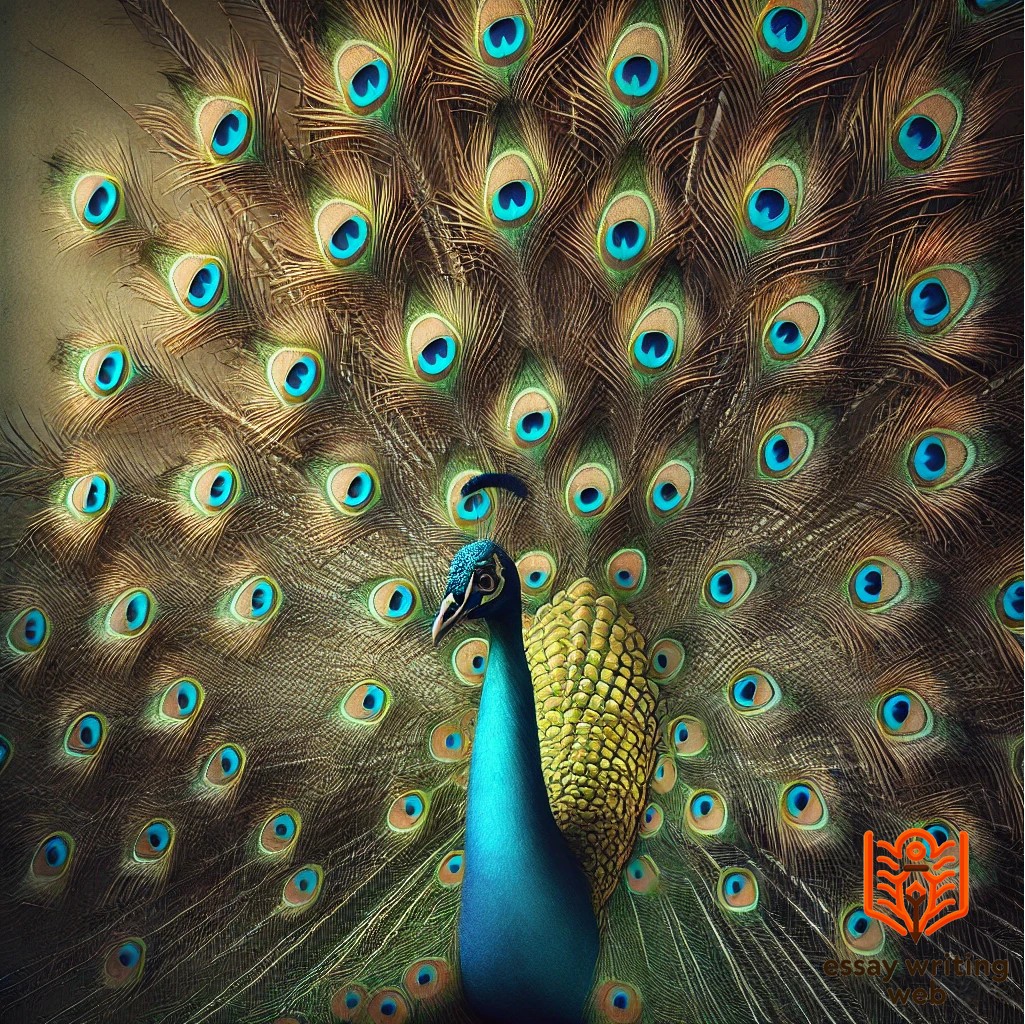

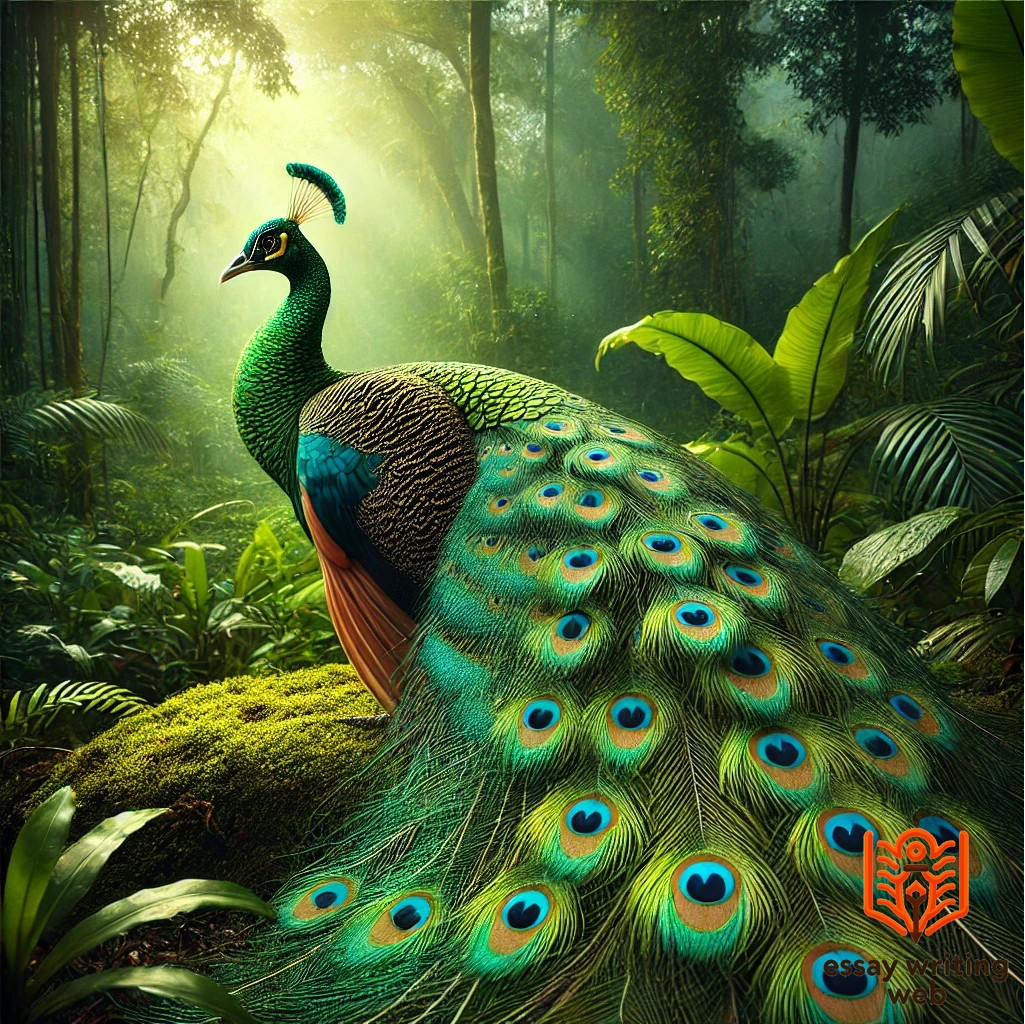
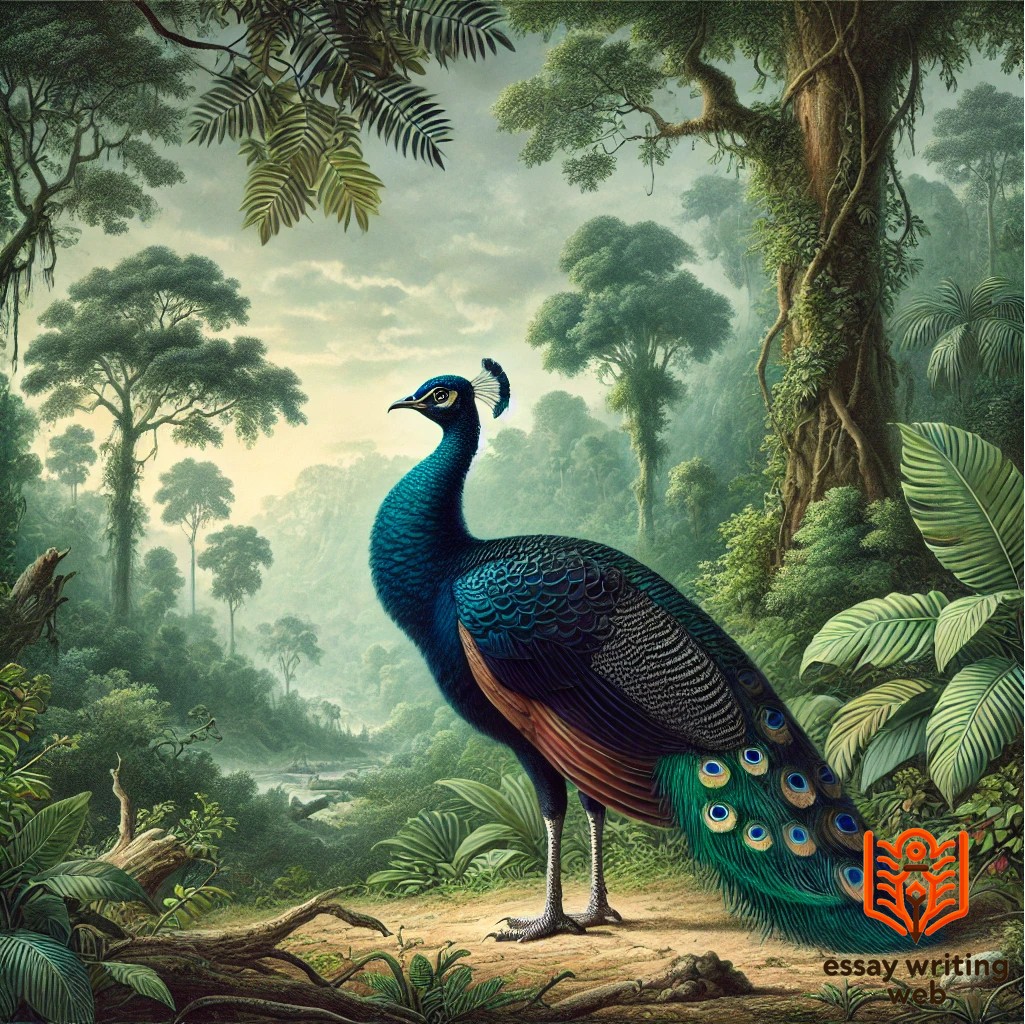
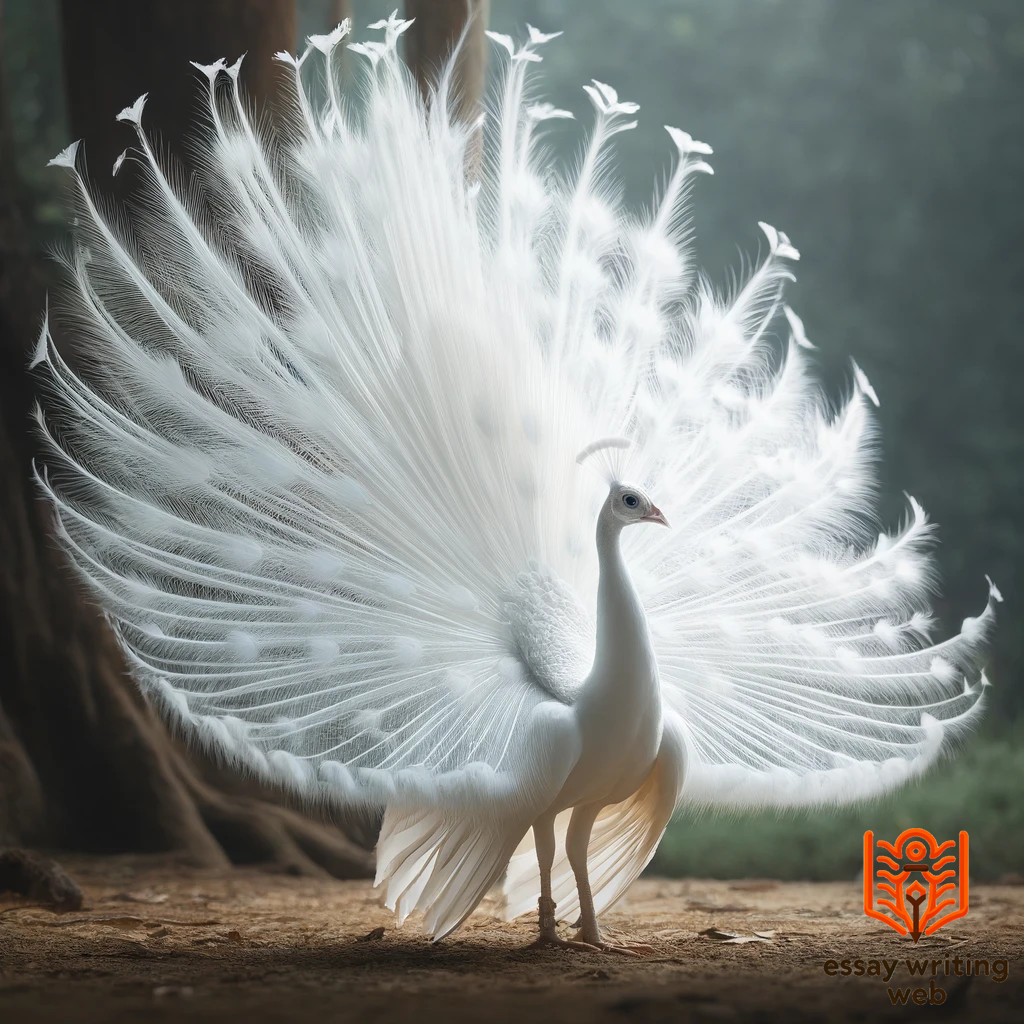

Each of these types brings its own unique beauty and cultural significance, making peafowl one of the most admired birds worldwide.
Peacocks are primarily found in the wild across South Asia, particularly in India, Sri Lanka, Nepal, and parts of Myanmar. Their preferred natural habitat includes deciduous forests, grasslands, and scrublands, which offer them ample cover and access to food. Peafowl are highly adaptable and can also be seen near human settlements, agricultural fields, and villages, where they forage for food and water.
Indian peafowl, the most common type, thrive in areas with a warm climate and sufficient vegetation to provide shelter and nesting grounds. They roost in trees at night to avoid predators and spend much of their time on the ground during the day, where they search for seeds, insects, small reptiles, and plants.
Green peafowl, native to Southeast Asia, are more restricted in their habitat due to deforestation and habitat destruction. They prefer dense forests and river valleys in countries like Vietnam, Thailand, and Myanmar.
Congo peafowl, found in the dense rainforests of the Congo Basin in Central Africa, are an entirely different species. These peafowl are less vibrant and smaller in size, adapted to the darker, more humid environment of the rainforest.
Peafowl are versatile birds, able to survive in a variety of environments, though habitat conservation remains key to their continued survival in the wild.

Peacocks are fascinating creatures, known not only for their beauty but also for their distinctive behaviors. One of the most well-known behaviors is the male peacock's courtship display. During the mating season, the male fans out its long, iridescent tail feathers in a spectacular display, showcasing the eye-like patterns to attract females. This behavior, often accompanied by a dance, is designed to demonstrate the male's health and vitality.
They spend much of their time on the ground foraging for food, which includes seeds, grains, insects, small reptiles, and plants. Despite their heavy bodies, peacocks are capable of short bursts of flight, which they use to escape predators or to roost in trees at night for safety.
Peafowl are also known for their vocalizations. Their loud, sharp calls are often heard during the rainy season, leading to their association with rain in many cultures. These calls are used to communicate with other members of their group and to warn of potential dangers.
In terms of social behavior, peafowl are generally solitary or found in small groups, though males and females tend to stay apart outside the breeding season. Their striking behaviors make them one of the most admired birds in the animal kingdom.
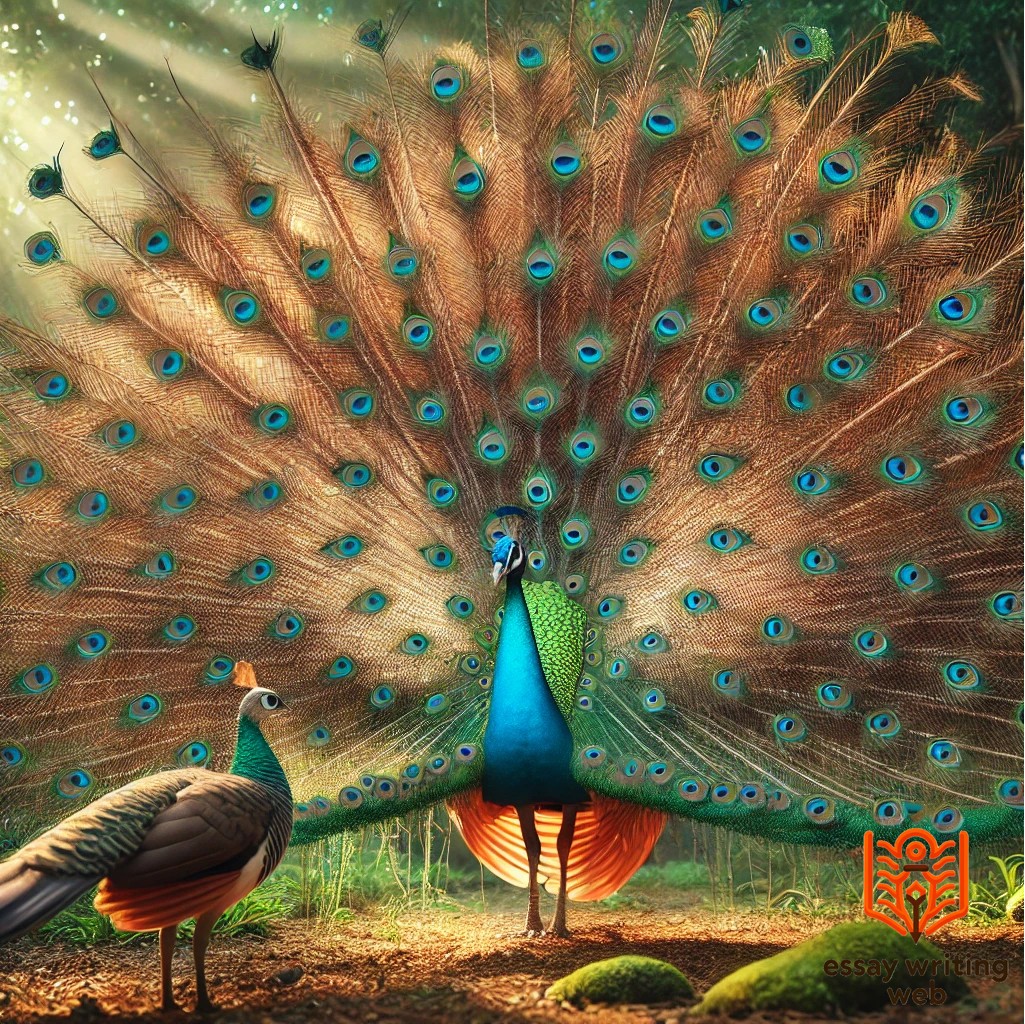
The mating rituals of peafowl are one of the most spectacular displays in the animal kingdom, with the male peacock’s courtship dance being particularly famous. During the breeding season, male peacocks spread their long, iridescent tail feathers into a magnificent fan, showcasing the intricate "eye" patterns on each feather. This display is not only a visual marvel but also a way to attract females, or peahens, by demonstrating the male's fitness and genetic quality.
The courtship dance involves the male shaking and vibrating his feathers, causing them to shimmer and rustle in the light. As the male performs, he often moves in a circular pattern around the female, ensuring that she gets a full view of his display. The more vibrant and well-formed the male’s tail feathers are, the higher his chances of being chosen by a female. This elegant dance highlights the beauty and complex mating behaviors of peacocks.
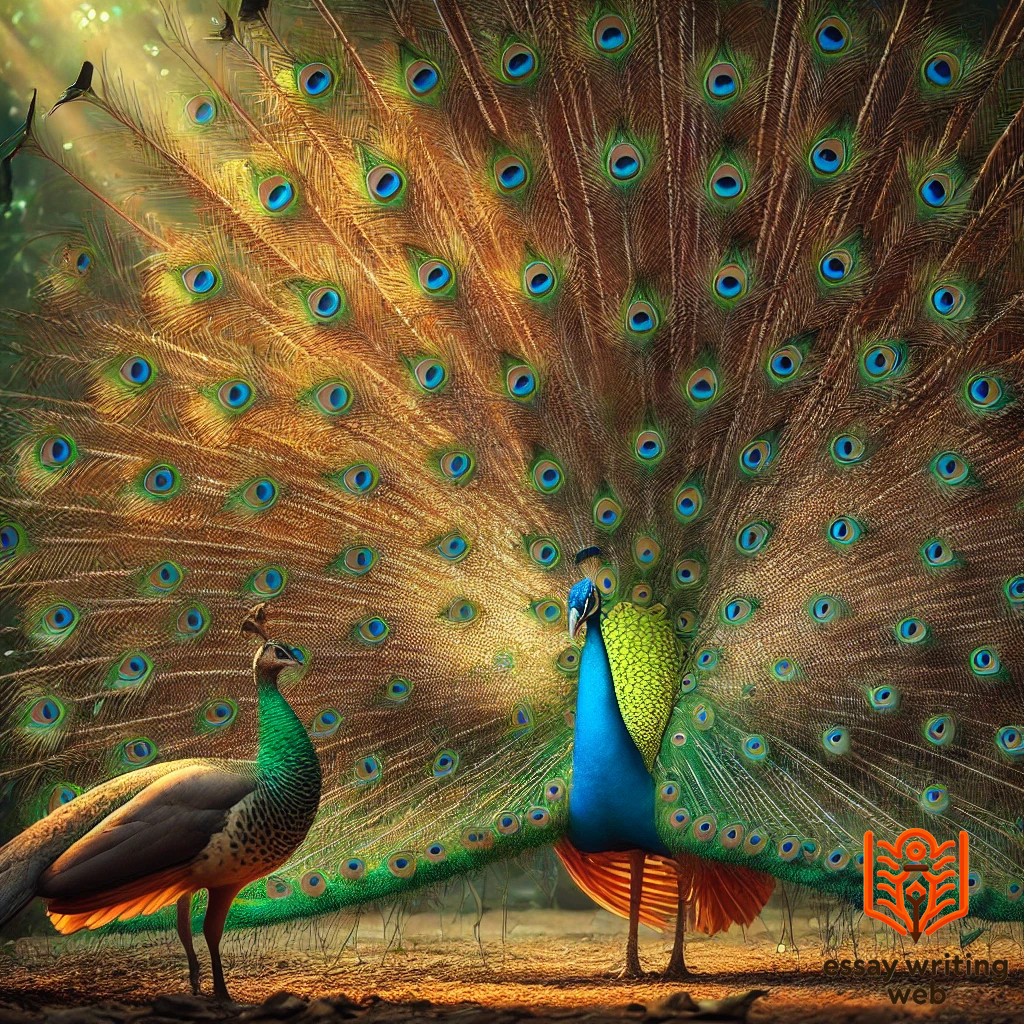
The peacock holds immense cultural and symbolic significance, especially in India, where it is the national bird. Its vibrant plumage and regal demeanor have made it a symbol of beauty, grace, and pride across various cultures. In Hinduism, the peacock is associated with several deities, most notably Lord Kartikeya, the god of war, who is often depicted riding a peacock. The bird is also connected to Goddess Saraswati, symbolizing knowledge, music, and art. Its brilliant feathers and majestic presence reflect the virtues of purity and divinity.
In Indian mythology, the peacock is also believed to represent immortality and protection. The "eye" patterns on its feathers are thought to ward off evil spirits, making it a symbol of vigilance. Peacocks are often featured in traditional art, literature, and architecture, signifying royalty and prosperity.
Beyond India, peacocks hold cultural importance in many other parts of the world. In ancient Greece, the peacock was sacred to the goddess Hera, representing renewal and immortality. In Christianity, the peacock symbolizes resurrection and eternal life due to its feathers' ability to shed and regrow.
Peacocks also play a role in popular culture, symbolizing elegance, vanity, and pride. Their distinctive appearance has made them an inspiration for artists, designers, and storytellers throughout history. With its rich cultural and symbolic associations, the peacock transcends its natural beauty, becoming a powerful emblem of spirituality, virtue, and timelessness across cultures.
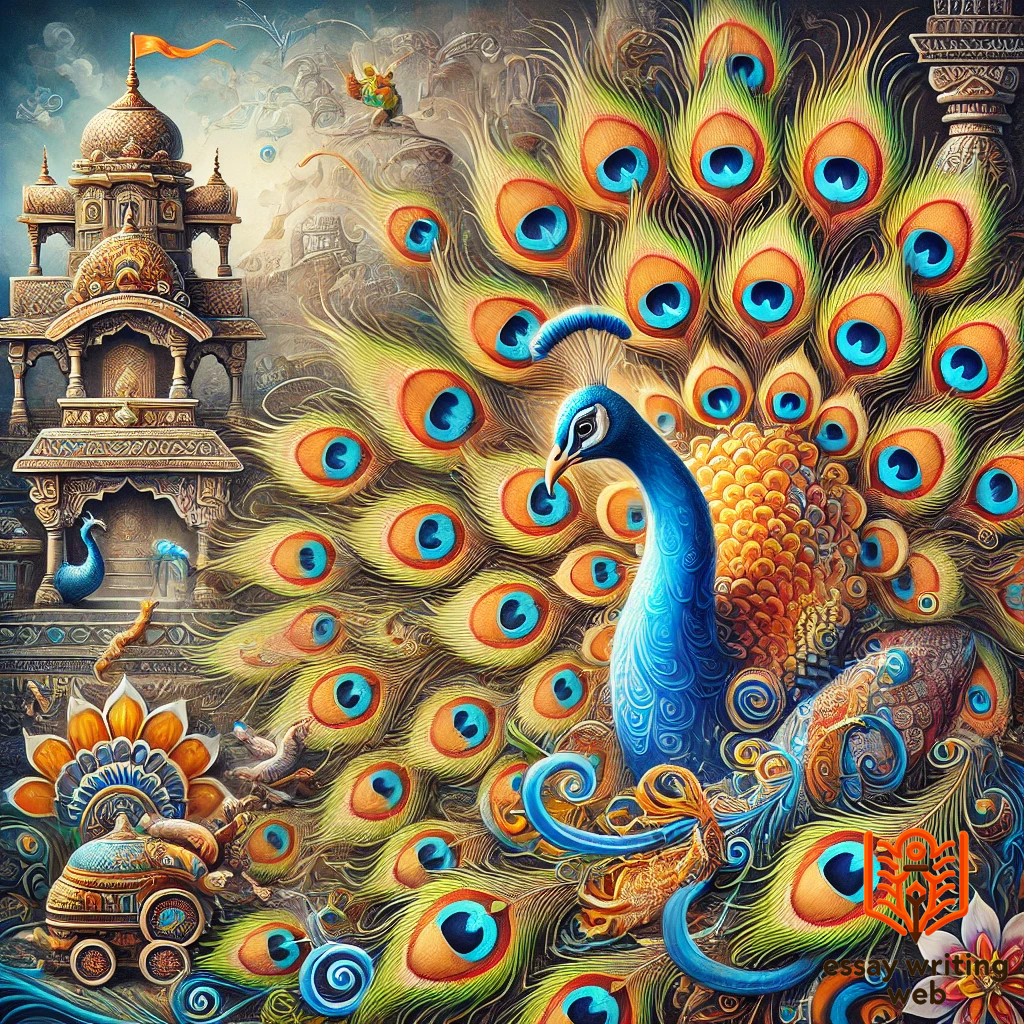
The current population status of peacocks, particularly the Indian peafowl (Pavo cristatus), is relatively stable, and they are classified as “Least Concern” by the International Union for Conservation of Nature (IUCN). This species is widely found across the Indian subcontinent, thriving in forests, grasslands, and near human settlements. Their ability to adapt to a variety of habitats has helped them maintain a stable population, even as urbanization spreads. In India, their status as the national bird provides them with legal protection, preventing hunting and trading of these birds.
However, other species of peafowl, such as the green peafowl (Pavo muticus), face more serious threats. Green peafowls are listed as "Endangered" due to habitat loss, hunting, and deforestation, particularly in Southeast Asia, where their numbers have declined significantly. Conservation efforts are underway to protect their natural habitats and reduce poaching.
While the Indian peacock is thriving in most parts of its range, ongoing threats such as habitat destruction, climate change, and illegal wildlife trade pose challenges to their long-term survival. Active conservation efforts and habitat protection remain crucial to ensure the continued stability of peafowl populations worldwide.
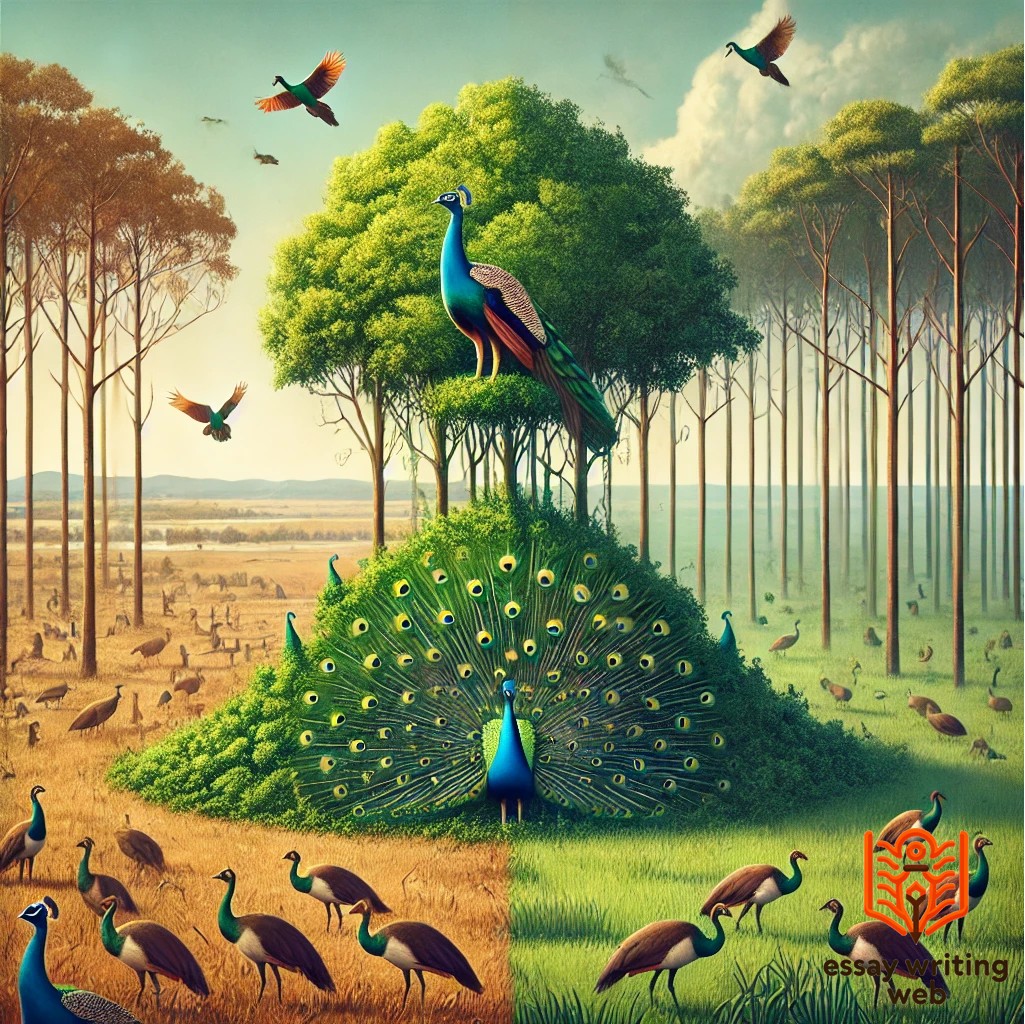
Efforts to protect peacocks and their habitats have gained momentum as conservationists and governments recognize the need to preserve these majestic birds. In India, where the Indian peafowl (Pavo cristatus) is the national bird, it is legally protected under the Wildlife Protection Act of 1972. This law prohibits the hunting, poaching, or trade of peacocks, ensuring that their population remains stable.
Conservation programs focus on habitat preservation, as urbanization and deforestation pose significant threats to peacock populations. Protected areas, such as national parks and wildlife sanctuaries, provide safe environments where peacocks can thrive. Additionally, afforestation efforts, which involve planting trees and restoring degraded ecosystems, play a crucial role in safeguarding their habitats.
For endangered species like the green peafowl (Pavo muticus), international conservation efforts are in place. Organizations like the International Union for Conservation of Nature (IUCN) work with local governments in Southeast Asia to protect green peafowl habitats and implement anti-poaching laws. Breeding programs in zoos and wildlife reserves help increase their numbers.
Public awareness campaigns also educate people about the importance of protecting peafowls and their ecosystems. These combined efforts aim to ensure the survival of peacocks and preserve the biodiversity of the regions they inhabit.
